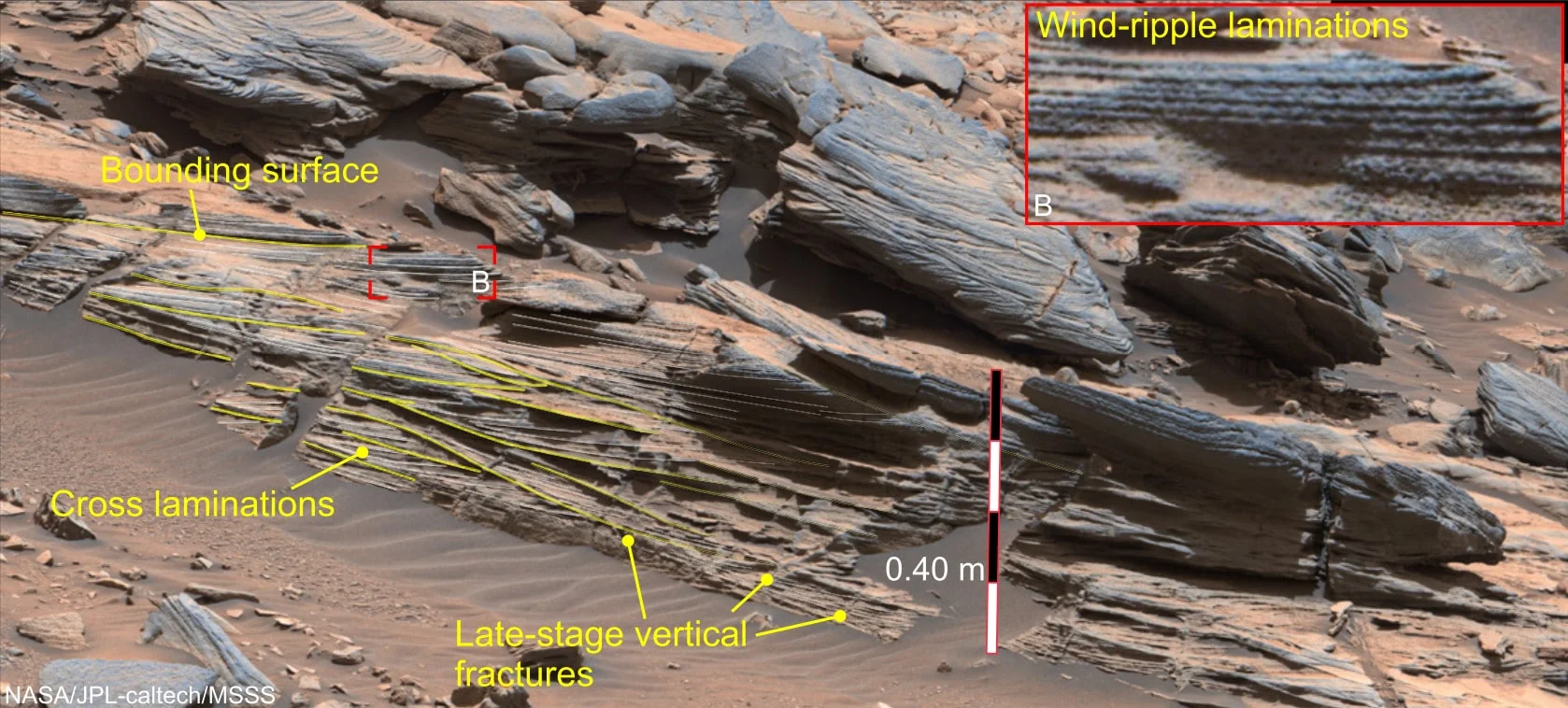An international research team examined photographs of sedimentary rocks in Gale Crater taken by the Curiosity rover and found deformations likely caused by groundwater.
Today, Mars is an extremely arid and seemingly lifeless place. But it is possible that vast rivers (on a planetary scale in the past) flowed through Mars less than a billion years ago. No one now doubts the existence of water on the Red Planet, but water has only survived in the form of ice or liquid below the surface.
The “dehydration” of Mars is believed to have occurred due to an event approximately three billion years ago. It radically changed the planet’s climate, depriving it of a dense atmosphere. At the same time, water in liquid form likely disappeared from the planet’s surface, forming ice and permafrost in the subpolar regions. The exact date when liquid water completely disappeared from the surface of Mars is not yet known.
An international research team has recently found evidence of liquid water in Gale Crater, where the Curiosity rover is currently operating. Scientists had previously revealed that there may be a lake in this crater with conditions suitable for life. Traces in the sandstone layers indicated that groundwater was present in the area at a shallow depth (practically near the surface) and at a later date than previously thought possible. The article was published in the magazine Geology.
The study’s authors saw transverse horizontal layers deformed by elevation in the eastern part of Mount Aeolid (informally referred to as Mount Sharp), at the foot of Pediment Greenhue. They are half a meter wide, 2.5-5 meters long and up to one meter high. These structures, which the researchers call “boxes,” have a very distinct layer similar to the eolian beds of the Stimson Formation found in the Northern Fronton.
Scientists also noticed vertical grooves in the transverse layers. The researchers interpreted these deformations on sandstone layers of the same thickness as traces of shallow groundwater. They proposed various versions of their origin: either water deformed sedimentary structures by flowing through narrow channels and washing away sand, or sometimes moisture was released under pressure by breaking Martian rock.
Such pressure can be applied to ice during freeze-thaw cycles. Melt water can flow, as a result of which voids are formed, this precipitate is subsequently blown away and thermal expansion forms cracks. One way or another, according to the authors of the article, water was a common link in all deformation mechanisms. In liquid or ice form, it may have been stored there while the rest of the planet dried out, possibly supporting local settlement in the region.
Sedimentary rock layers in the crater show a transition from a wetter to a drier environment over time, reflecting Mars’ transition from a wet, habitable environment to an uninhabitable desert world. But these structures formed by water in barren sandstone show that water has existed on Mars for much longer than previously thought,” said study co-author Amelie Roberts.













